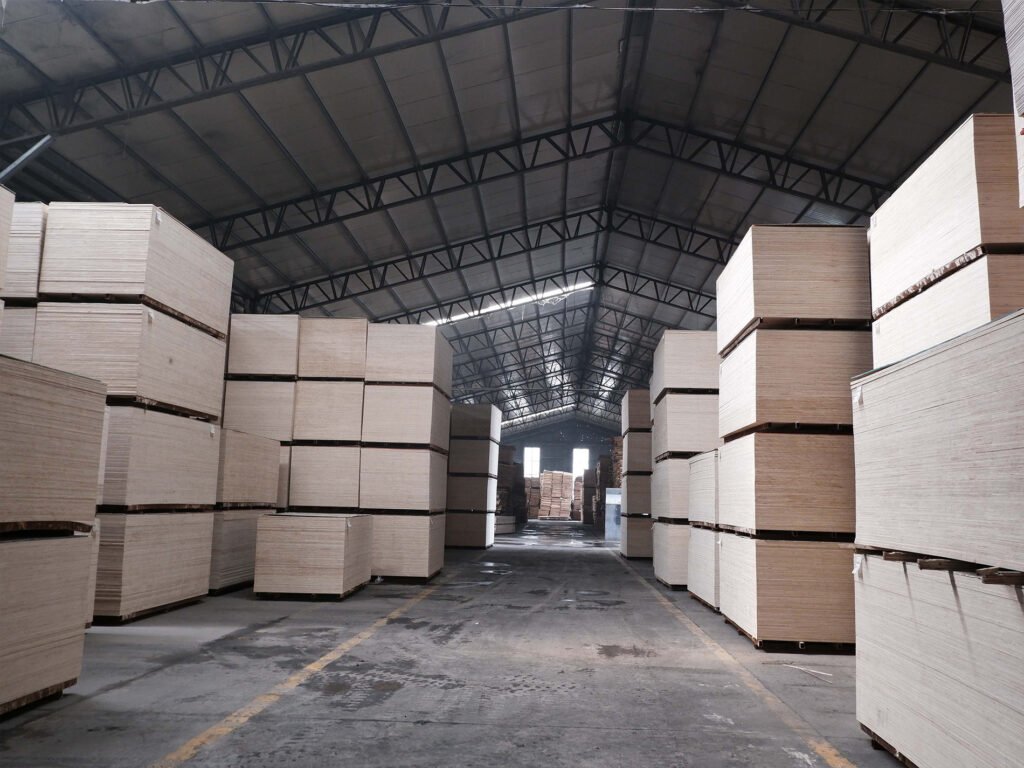How To Make Plywood?
Make plywood is a complex industrial process that involves several steps. Plywood is typically manufactured in large mills with specialized equipment.

Here is an overview of the steps involved in make plywood:
- Log Selection and Preparation:
- The process begins with the selection of suitable logs, usually from softwood or hardwood trees. The logs are debarked and cut into the desired lengths.
- Peeling or Rotary Cutting:
- The prepared logs are then fed into a rotary lathe machine. The machine peels the logs into thin sheets or veneers by rotating the logs against a sharp blade. These veneers are typically around 1/8 inch (3.2mm) thick.
- Drying Veneers:
- The freshly peeled veneers have a high moisture content and need to be dried to a specified moisture level. This is usually done in a drying chamber or kiln to prevent warping and ensure uniform moisture content.
- Sorting and Grading:
- After drying, the veneers are sorted and graded based on their quality. Higher-quality veneers will be used for the face layers of the plywood, while lower-quality veneers may be used for the core layers.
- Glue Application:
- The veneers are then coated with adhesive, typically a formaldehyde-based resin. The glue is applied evenly to ensure a strong bond between the layers.
- Laying Up Plywood Panels:
- The prepared veneers are stacked together with the grain direction of adjacent layers at right angles to each other. This cross-grain orientation enhances the strength and stability of the plywood.
- Hot Pressing:
- The stacked veneers are placed in a hydraulic press that applies heat and pressure. This process bonds the layers together, activating the adhesive and forming a solid plywood panel.
- Cooling and Trimming:
- After the hot pressing, the panels are allowed to cool. Excess material and irregularities are trimmed, and the panels are cut to the desired dimensions.
- Sanding and Finishing:
- The plywood panels are sanded to achieve a smooth and consistent surface. Some plywood may undergo additional finishing processes, such as applying a veneer or decorative surface layer.
- Quality Control and Inspection:
- Plywood sheets are thoroughly inspected for defects, including delamination, voids, and other imperfections. Sheets that meet quality standards are packaged for distribution.
- Packaging and Shipping:
- The finished plywood sheets are bundled, packaged, and prepared for shipping to distributors, manufacturers, or retailers.

Log → log sawing → wood section peeling → veneer peeling → veneer drying → veneer finishing → gluing → blank assembly → pre-pressing → hot pressing → trimming → sanding → inspection and grading → packaging and storage.
The plywood production process mentioned above, if you have any questions, please contact us.
It’s important to note that the manufacturing process and quality standards can vary depending on the type of plywood being produced, whether it’s interior, exterior, marine-grade, or specialty plywood. The use of sustainable and environmentally friendly practices, such as using low-formaldehyde or formaldehyde-free adhesives, is also becoming more common in plywood manufacturing to meet regulatory and environmental requirements.





